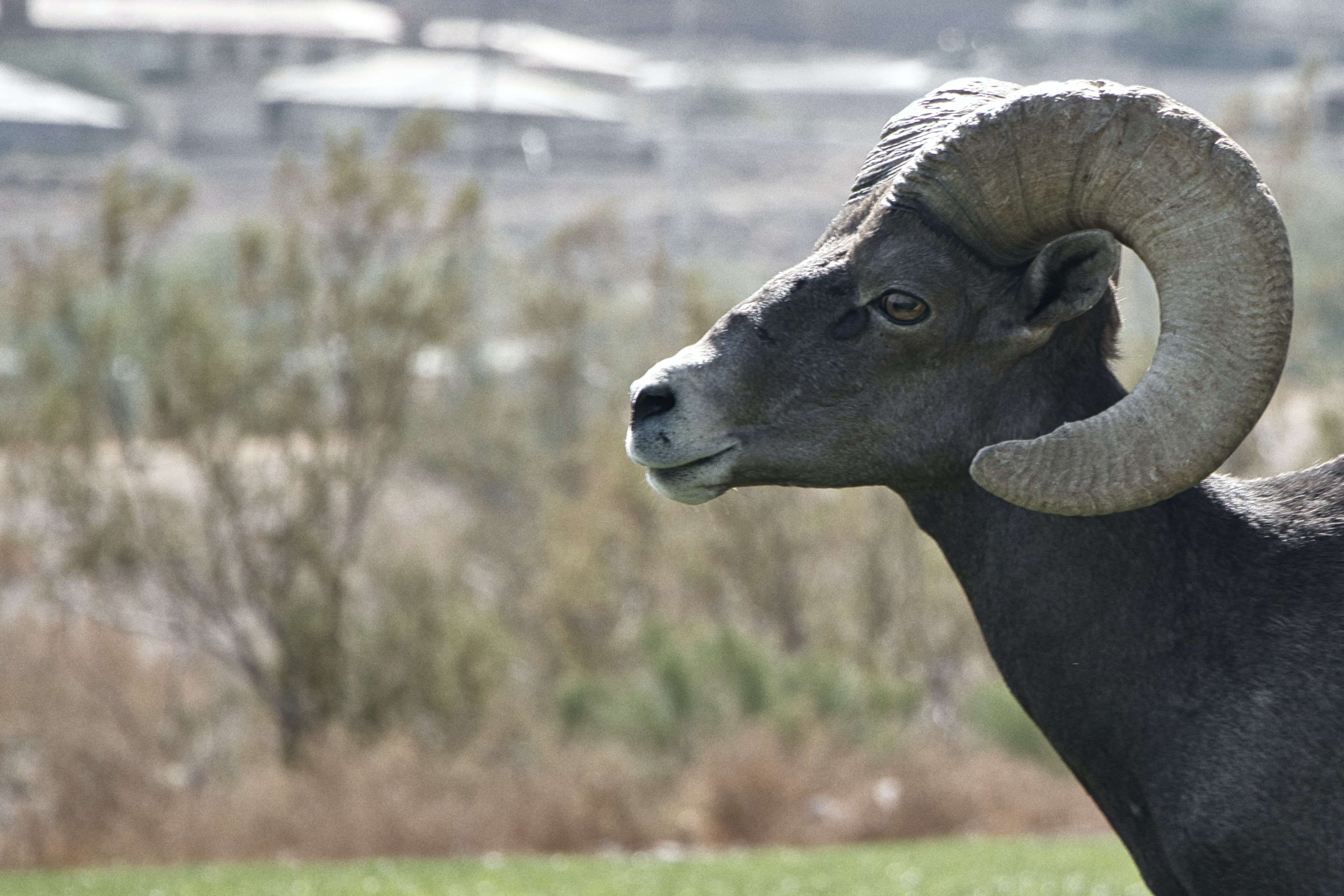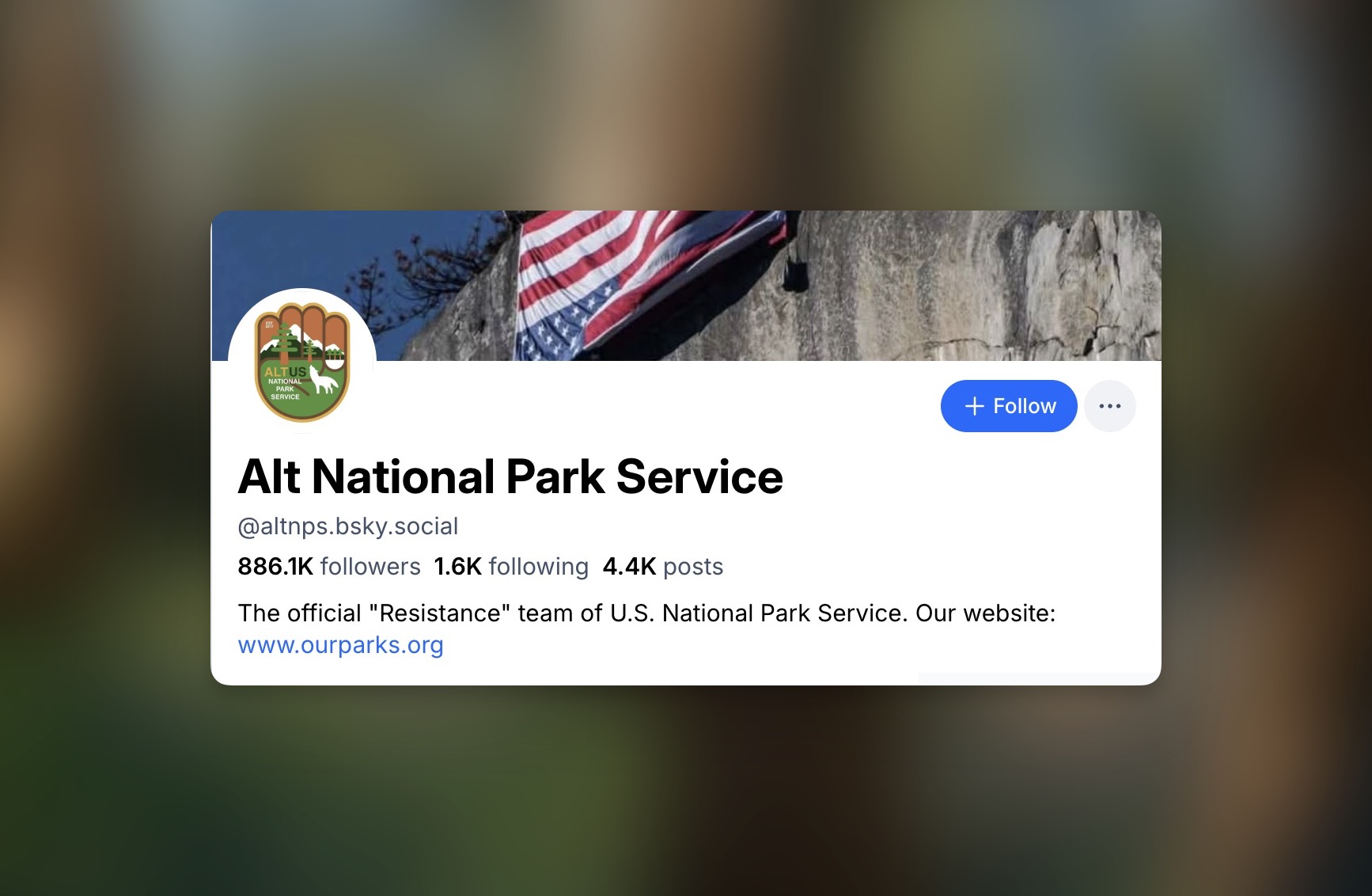Vail Resorts (VR) owns (well, owned) a 23-acre parcel of land in East Vail, known as Booth Heights. In 2017 the town council approved a VR-requested rezoning for the parcel. This split the property into 18 acres of preserved open space and 5 acres of buildable space, where they planned a development focused on affordable housing for Vail employees, with approximately 165 beds.
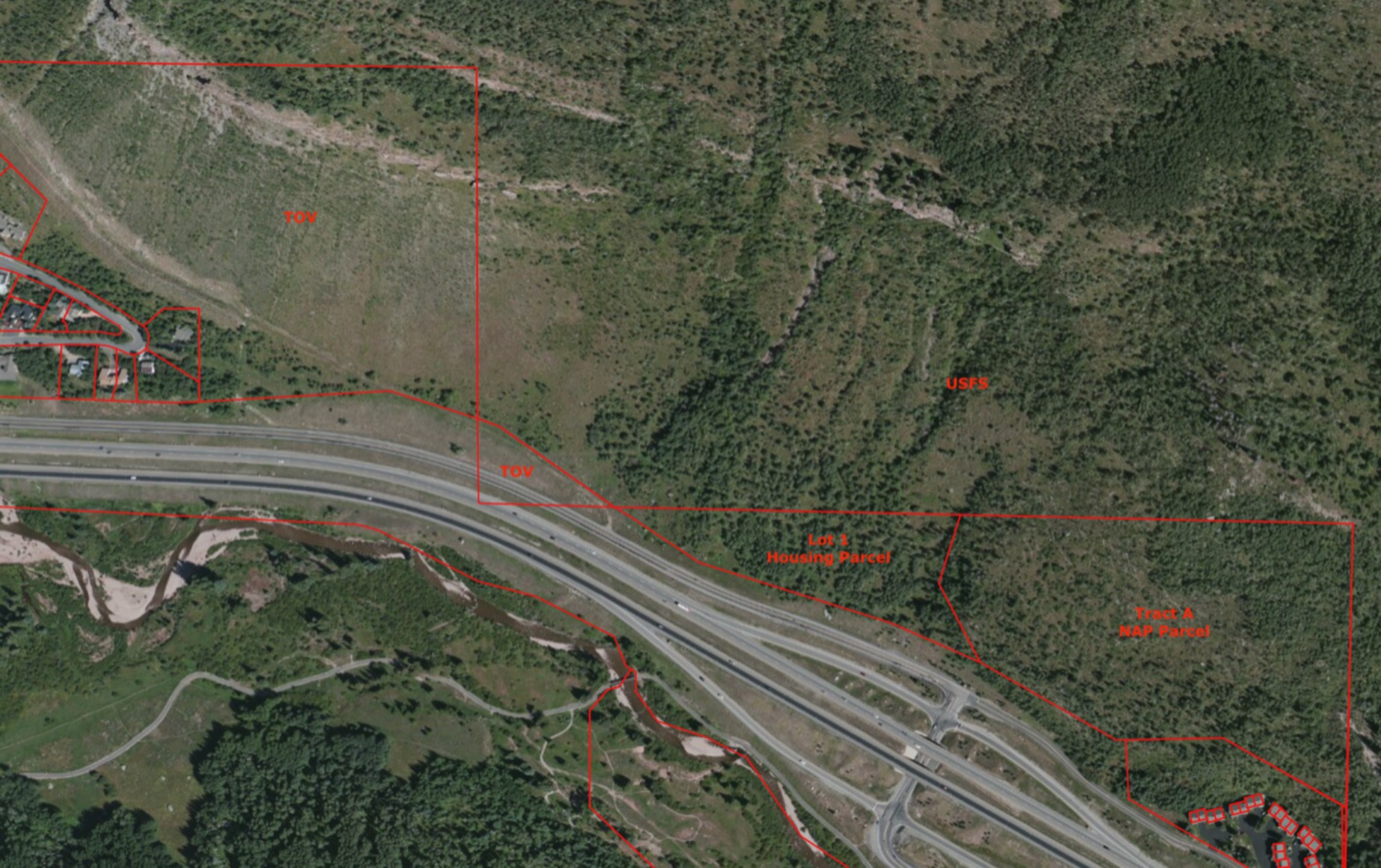
Supporters of the project included VR, the Vail Valley Partnership, local businesses concerned about workforce availability, and local families + workers impacted by housing costs. Detractors included East Vail homeowners, numerous wildlife biologists and conservation organizations, and the current town council/mayor.
An environmental review of the site and plans was conducted by Western Ecosystems, Inc of Boulder, CO in 2019. The review acknowledged impacts on sheep (and other local wildlife) and offered up a set of mitigation recommendations and guidelines for the development to minimize impact. These were adopted into the plans.
In August 2019, the Planning and Environmental Commission of Vail held a public hearing on the plan application and voted 4-3 to approve. However, after a new town council was elected, they later voted to condemn the parcel in May 2022, following a second environmental review, failed negotiations around land swaps, and multiple purchase offers (VR claimed that the offer prices of $7.8M and later $12M were not representative of the land value).
VR ultimately turned down the offers as unequal or mis-aligned. Their rebuttal focused on housing as imminent need, voicing the opinion that housing should be built on all of these parcels. They had additional concerns that a lack of approvals + rezoning meant that swaps might not be ready for years, while the Booth Heights development was ready to break ground. It’s also worth noting that some of the other available land is likely to (or has already) attracted similar detractors to the Booth Heights project.
VR sued to prevent the seizure of the property, but a judge ruled that the Town of Vail could take possession but would have to pay VR $17.5 million for the parcel (amount set by an appraiser).
On Tuesday, the Town of Vail voted 5-2 to approve the $17.5M acquisition, ending a years-long saga.
Was Vail Resorts participating in good faith?
It’s hard to say. It’s possible that VR “expected” this to fail and were playing the situation as a PR stunt, never expecting to build anything. However, the fact that this development *was *previously approved and ready to break ground runs counter to that argument.
Was NIMBY at play here?
There were plenty of real concerns, but they were sometimes paired with additional comments like “neighborhood compatibility” and “character”. A few public comments in opposition to the project:
“I have lived happily on Bald Mt. Rd. for over 30 years now and am totally against any invasive employee housing here in our nice and quiet neighborhood.”
“When you come down Vail Pass there is nothing like the view into the valley. This project will just be another scar on the landscape like Middle Creek employee housing.”
“Booth Heights threatens the viability of this statement by becoming the first glimpse of Vail, for those coming to town, and the last image, before leaving our otherwise beautiful valley.”
What’s not up for debate
The property intersects with bighorn sheep habitat. While there are differing opinions about the impact of the property, the amount it overlaps with high-value winter range, and mitigation efforts, there is no question that building anything on this parcel would affect the bighorn sheep, both from construction and from eventual human habitation. There are very legitimate concerns about additional traffic on the frontage road, the access to grocery stores and amenities, and more.
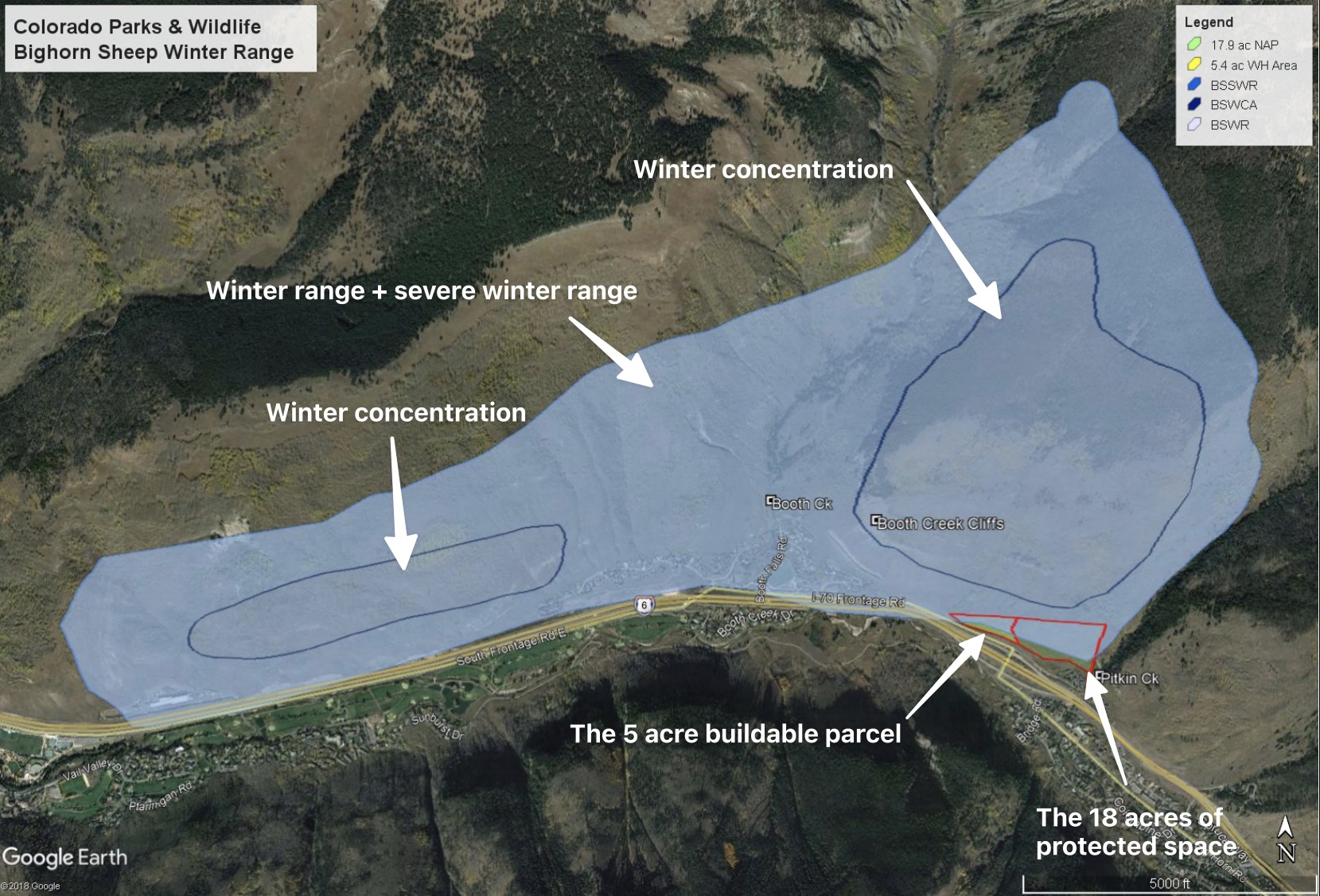
What’s complicated
First, there’s the question of whether the town was truly being “fair” about this development. Multi-million dollar single-family homes have no issue getting approved without controversy in the adjacent East Vail neighborhood, despite also intersecting with sheep habitat. Notably, although the review and recommendations were made in 2019, the town of Vail has not implemented said guidelines and regulations for the tract of luxury housing.
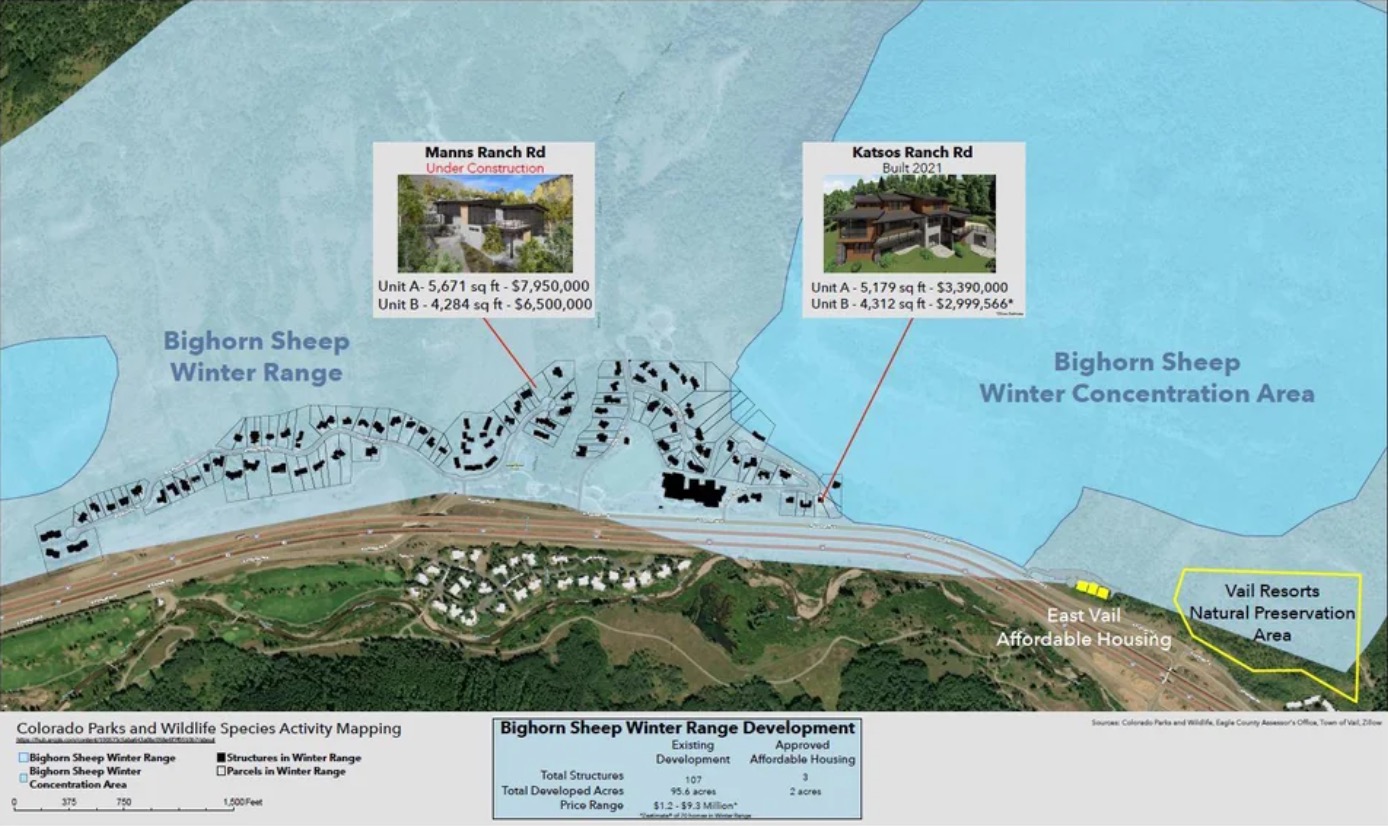
And second…is there anywhere in the mountains that won’t affect wildlife?
The recommendations of biologists assert that the best options would be not to build anything at all, which is…not a surprising conclusion. But herein lies the friction in mountain towns — what else can you do? Building anywhere the mountain west is likely to impact local ecosystems and wildlife in some way. Many of places are surrounded by public land, and constrained through geography and zoning. These are the qualities that make them both an enticing place to live, and a crisis for housing. Eagle county (where Vail is located) “shows a shortfall of 4,500 units to meet current needs”, according to the latest Eagle County Housing Assessment.
Two complicated things can be true at once: wildlife and land deserves to be protected *and *compromises may ultimately have to be made to maintain the economies of mountain towns. Are there potential paths towards “solutions”? Absolutely. Let me know if you have the capital (political and monetary) to re-zone and rebuild all the empty vacation homes in Vail into high-density housing. I’m all for it.
It might be easy to be a no-compromise environmentalist from the comfort of your multi-million dollar mansion in East Vail. But it all gets a bit messy if you’re unable to attract enough employees to keep your business open. Or you’re one of the thousands of folks that keeps the resort staffed and running in the winter (one public comment stood out for suggesting that Vail just needed to fire a bunch of resort employees and that would fix the housing crisis). And it’s not just people in the service industry. A public commenter and current resident of Vail’s Chamonix neighborhood (similar, deed-restricted housing) had this to say:
“Wildlife is important. It is one of the reasons we enjoy Vail. But homes for families like mine are equally important. To not develop on the land would be a direct hit to the working class citizens of Vail who rely on projects like Chamonix to continue to live and work in the Town. How can building another Chamonix be a bad thing, if done responsibly? The Town should do its part to protect and enhance wildlife. And the developer should be sensitive to wildlife as well. But wildlife should not be a “veto” card that any opponent can waive to stop a new neighborhood of families like mine, just because they don’t like it.”
